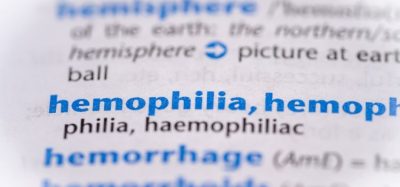Antibiotics ‘no longer effective’ for childhood infections, finds study
Posted: 2 November 2023 | Caroline Peachey (European Pharmaceutical Review) | No comments yet
Australian-led study highlights ‘alarmingly high’ rates of resistance to commonly-prescribed antibiotics in the Asia-Pacific region.


Research led by the University of Sydney has found that many antibiotics recommended by the World Health Organization (WHO) had “less than 50 percent effectiveness” in treating childhood infections such as pneumonia, sepsis and meningitis.
The study, published in Lancet South East Asia, analysed 6,648 bacterial isolates from 11 countries across 86 publications to review antibiotic susceptibility for common bacteria causing childhood infections.
The study found one particular antibiotic, ceftriaxone, was likely to be effective in treating just one in three cases of sepsis or meningitis in newborn babies.
Gentamicin, which is commonly prescribed alongside aminopenicillins, was also deemed likely to be effective in treating fewer than half of all sepsis and meningitis infections in children.
Carbapenems provided higher rates of coverage (around 80 percent), but researchers stated that their widespread use needs to be balanced against propagating further antimicrobial resistance (AMR), particularly carbapenem-resistant infections.
The findings add to mounting evidence that common bacteria responsible for sepsis and meningitis in children are often resistant to prescribed antibiotics”
The findings add to mounting evidence that common bacteria responsible for sepsis and meningitis in children are often resistant to prescribed antibiotics.
The study, which was funded by the Wellcome Trust, also reveals the urgent need for global antibiotic guidelines to be updated, to reflect the rapidly evolving rates of AMR. The most recent guide was published by the WHO in 2013.
The WHO has declared AMR as one of the top 10 global public health threats facing humanity. In newborns, an estimated three million cases of sepsis occur globally each year, with up to 570,000 deaths: many of these are due to lack of effective antibiotics to treat resistant bacteria.
Tackling antibiotic resistance
The study’s lead author Dr Phoebe Williams said the best way to tackle antibiotic resistance in childhood infections is to make funding to investigate new antibiotic treatments for children and newborns a priority.
“Antibiotic clinical focus [is] on adults and too often children and newborns are left out. That means we have very limited options and data for new treatments.”
Dr Williams is currently looking into an old antibiotic, fosfomycin, as a temporary lifeline to treat multidrug-resistant urinary tract infections in children in Australia.
She is also working with the WHO’s Paediatric Drug Optimisation Committee to ensure children have access to antibiotics to treat multidrug-resistant infections as soon as possible.
“This study reveals important problems regarding the availability of effective antibiotics to treat serious infections in children,” says senior author Paul Turner, director of the Cambodia Oxford Medical Research Unit at Angkor Hospital for Children, Siem Reap and professor of paediatric microbiology at the University of Oxford, UK.
“It also highlights the ongoing need for high quality laboratory data to monitor the AMR situation, which will facilitate timely changes to be made to treatment guidelines.”
EPR Podcast Episode 17 – Antimicrobial Resistance – Boumediene Soufi, Sandoz
Related topics
Antibiotics, Clinical Development, Microbiology, Research & Development (R&D)
Related organisations
Angkor Hospital for Children, The World Health Organization (WHO), University of Oxford, Wellcome Trust









